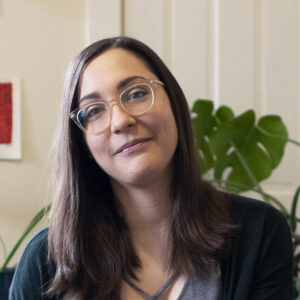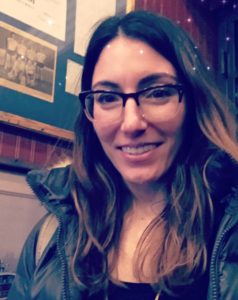
Continuing Education classes available to anyone, anywhere, after Spring schedule moves online
Wednesday, April 29th, 2020
Pennsylvania College of Art & Design announces its Spring slate of Continuing Education courses, a full list of programming that runs the gamut of credit and non-credit classes with one thing in common:
You can take them all online.
Due to ongoing statewide coronavirus restrictions, in-person instruction is not currently permitted. But Continuing Education instructors have revamped their lessons to make online learning not only possible, but effective — and fun!
Still having trouble envisioning how an online art-related class can enrich your creativity? Then you may want to check out one of the three single-session workshops this Spring.
For just $5 you can tackle Abstract Drawing or Watercolor Exploration with PCA&D Foundation Department faculty member Justin Phillips, or Designing Effective Icons with industry pro Matt Hannigan, and experience the ins and outs of online art instruction.
Here’s the full Spring lineup of Continuing Education courses:
Beginning/Intermediate Watercolor
You can visit here for details, supply lists, and links to registration.
As always, Continuing Education courses at PCA&D will be taught by faculty, working artists, and industry professionals. Meet three of them here: Michele Lombardo (Writing: Character & Conflict), Samuel Schindler (Origins of the Divine), and Gabrielle Shelly (Botanical Relief Printmaking).
Origins of the Divine
Meet Instructor Samuel Schindler (CE 432)
Botantical Relief Printmaking (CE 287)
Meet Instructor Gabrielle Shelley
Gabrielle is originally from Lebanon, Pennsylvania, and moved around the state before settling in Lancaster. Gabrielle has her BFA from Kutztown in Communication Design – or, as most people know it, graphic design. She has worked in graphic design for years, but has always loved the fine arts. Learn more about Gabrielle Shelley and her spring course, Botanical Relief Printmaking, in our Q&A:
Tell us about your interest in printmaking?
GS: I actually never took a printmaking class while I was in art school, because I couldn’t fit it in my schedule! But I did create a linocut for a poster class, and the printmaking instructor at the time was kind enough to let me use his studio and supplies, and help me out. That is what sparked my interest in printmaking as an art form. Other than that, I’ve been mostly self-taught, and get a lot of ideas and processes from friends and fellow artists. Currently I run Fresh Prints of Lancaster, which is my personal printmaking studio. With Fresh Prints, I sell on Etsy, at art shows, and through Madcap & Co. (in downtown Lancaster). I also do some freelance graphic design work.
What are you teaching this session and can you tell us a little bit about your class?
GS: I will be teaching Botanical Relief Printmaking during the spring session. We will learn about the basic principles of making a relief print. The main project will be to draw, carve, and print our very own botanical art-style relief print.
By the end of the course, students should see and feel that printmaking can actually be a very accessible and rewarding art medium. It is easily achieved with just a little patience and a few special tools, and can be done by anyone!
I am excited about teaching a class, in general! This will be my first class at PCA&D, and I very much look forward to connecting with students over the rewarding feeling of creating your own piece of artwork.
What do you do for fun when you’re not teaching/working?
GS: I am pretty obsessed with food! If I’m not checking out a new or favorite restaurant, I’m trying to cook a good meal or bake something to share with my friends. Most of my trips and plans revolve around where we will be eating or grabbing a drink.
Writing: Character & Conflict (CE 131)
Meet Instructor Michele Lombardo
Michele Lombardo grew up in Pricetown, a small town outside of Reading. She notes that it is the epitome of a small town, and basically consists of some
old stone houses, a pizza shop, and a local tavern. It’s nestled in between two other small towns, Oley and Fleetwood, for anyone familiar with the area. She has spent most of her adult life living in cities: 13 years in Philadelphia, and two years in Arlington, Va., just outside of Washington, D.C. She and her family moved to Lancaster eight years ago. Learn more about Lombardo and her class in our Q&A:
Tell us more about your background in literature and writing?
ML: I’ve always loved literature, which is why I pursued a BA in English at Penn State for my undergrad. I’ve also always written. In college I wrote for the school magazine, and after graduating I went into Marketing and Communications. During my tenure in Corporate America, I wrote marketing copy, executive speeches, newsletters, press releases, white papers, essays, and more. I no longer do corporate work full time, but I still do freelance.
I had always wanted to write fiction, but didn’t allow myself to take the interest seriously until about 12 years ago. At that point, I began taking online courses and attending workshops and soon applied to MFA programs. I wound up getting an MFA in Creative Writing from the University of California, Riverside. My focus was fiction, but I also had a cross-genre concentration in screenwriting, and I think learning both art forms simultaneously was really useful. They’re incredibly symbiotic.
Since then, I joined the Fiction Board of Philadelphia Stories, co-launched a monthly writing meetup called Write Now Lancaster, and have published short stories in several literary journals. I now have enough stories to form a short story collection, which I’ll eventually try to publish, and I am working on revisions on my second novel.
What are you teaching this session?
ML: This session I’m teaching Writing: Character & Conflict. It’s a class that is so fundamental to creative writing, yet the information and techniques aren’t typically covered in beginning writing programs. Or intermediate, for that matter. I didn’t come across most of the content I will cover until my MFA program or, in some cases, even later. It’s a class that will be useful for fiction writers, screenwriters, and even creative nonfiction writers.
My class will cover strategies for building a complex and memorable main character from the ground up. We’ll do generative exercises that will help students develop their character and then explore how to construct an inherently dramatic, character-driven narrative around that protagonist.
Interesting characters are flawed and they spend their stories in conflict with themselves and those around them. We’ll explore not only how and why these are the stories that resonate with us the most, but also how to achieve that resonance within our own work.
It’s been incredibly fascinating for me to lift the veil of mystery surrounding great storytelling. So I am most excited to share with students how to deconstruct their favorite books and movies and learn from the choices other writers have made. When we watch a movie or read a book, we might think the story is “about” the main character chasing an external goal. Maybe they’re trying to get a promotion or get rich or save a family member or save the galaxy. But all stories are actually two stories in one. There’s the character’s pursuit of that external goal, which serves as the “action” of the story. But there’s also a character’s internal needs which are always unconscious and are often at odds with the prize they are chasing. This is the emotional throughline of the story, and so as characters battle whatever obstacles are standing in the way of attaining their external goals, they’re typically battling themselves, too. It’s these hidden fears, desires and motivations that interest me most and that actually serve as the soul of storytelling. I’m so excited to share how to create the internal conflicts and contradictions that are the hallmark of great storytelling, and that can change a story about a home invasion (“Home Alone”), for example, into a story about something more universal, like acceptance.
What are some of the most important takeaways that prospective students should know about your class?
ML: Students will leave the class with a much better understanding of how storytelling works. They’ll also take a very deep dive into creating their own protagonist and exploring how to craft a story around that individual. They’ll develop a compelling character with a backstory that has fueled some misconceptions about the world. They’ll develop a plot that maximizes the character’s inner conflict, and come up with ideas for the secondary characters they’ll need to propel their story forward.
What do you do for fun when you’re not teaching/working?
ML: I’m an avid reader and a movie buff, and I spend a lot of my time writing fiction. I also love to travel, hike, ski, swim, dance, and spend time with my husband, 10-year-old daughter, and our cat. I am a little obsessed with cats. One day I hope to follow in the footsteps of the amazing Japanese surrealist writer Haruki Murakami and write a novel with at least one talking cat in it.
You can find links to my recent published short stories at https://michelelombardo.com/publications.


